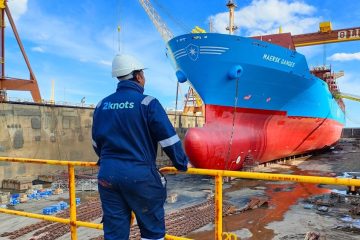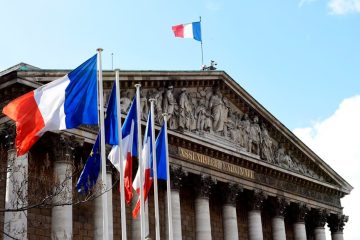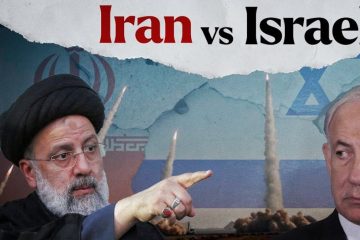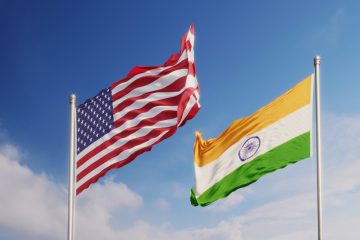Without Apple or Tesla, the Indonesian Economy Is Working Hard for Its Big Break

For a long time, Indonesia, the fourth most populous nation in the world, has performed below par.
Businesses looking to expand their manufacturing outside of China have mostly turned their gaze elsewhere in Southeast Asia. Recently, Apple chose India, the country where millions of iPhones are produced. Nike decided to source its sneakers primarily from Vietnam.
Although Indonesia is now the world’s largest producer of nickel due to a rush to supply the mineral to electric vehicle manufacturers, the much-anticipated Tesla factory has yet to materialize.
As the 280 million citizens of the nation head to the polls on Wednesday to choose a new president, the stakes are great. With the exception of the epidemic, President Joko Widodo has guided the economy steadily over the past ten years, averaging 5% annual growth. However, Indonesians have not witnessed the manufacturing growth driven by exports that transformed nations like Taiwan and South Korea into Asian tigers.
Before time runs out, the incoming president of Indonesia, who will assume office in October, must accelerate growth and free the country from the middle-income trap.
With almost two thirds of the population of working age, Indonesia is likely to experience a demographic dividend far into the 2030s. Indonesia has to generate a lot of high-quality jobs in order to capitalize on that. If not, its hordes of youth will age before they become wealthy, making it impossible for them to ever catch up to the living standards of the developed world.
Employing legions of people to produce items for the global market is the traditional way to improve Indonesia’s gross domestic product per capita of $5,500 to levels more akin to that of South Korea or China, which are at roughly $35,000 and $13,000, respectively. According to some economists, the model is flawed since wealthy nations are committed to maintaining more manufacturing in their borders and have sophisticated robotics to do so, while China’s productive economy makes it difficult for up-and-coming businesses to compete.
But Indonesia hasn’t been a preferred “plus one,” even when geopolitical concerns have compelled Western businesses to look for alternatives to China. From four in 2017 to two in 2022, the number of Indonesian businesses supplying Apple was cut in half. Apple increased the number of its declared Indian suppliers from four to fourteen during that time.
Vietnam also received a major boost to its industrial base from the expansion of manufacturing firms such as the Danish company Lego and the American semiconductor packaging company Amkor.
Southeast Asian nations including Malaysia, Vietnam, and Cambodia have seen an increase in the manufacturing sector of their economies since the start of the U.S.-China trade war in 2018. It has kept sinking in Indonesia. World Bank figures show that foreign investment has stagnated recently, with much of what has come in going toward mineral processing as opposed to labor-intensive industry.
“Most businesses come to Indonesia only to look for the local market; they don’t think it’s feasible for them to build their factory,” stated Siwage Dharma Negara, a senior fellow at the Singapore-based think tank ISEAS-Yusof Ishak Institute.
Although Widodo has made significant investments in ports and roads, the cost of logistics in the Indonesian archipelago is far greater than in many other emerging nations. Although a recent deregulation package has been well received by investors, Indonesia continues to be known as a difficult location to do business because of its intricate bureaucracy.
For cutting-edge industries that the government has attempted to prioritize, like EV batteries and semiconductors, skilled manufacturing personnel are hard to come by.
Indonesia has long been seen by economists as a country full with opportunities. Its vast number of young people offers the basis for a manufacturing revolution; thousands of islands whisper vacation destination; rich tropical soil may turn it into a major player in agricultural exports; and it boasts abundant mineral resources.
On all three fronts, the nation has experienced some degree of success. With the start of industrialization in the 1980s, Indonesia emerged as a major provider of basic items to the world market, including toys, clothes, furniture, and shoes. The nation is the primary supplier of nickel in the world, the island of Bali is a popular tourist destination, and palm oil is a significant export.
It is now wealthier than Vietnam and India, having risen into the upper middle-income bracket thanks to all of that and robust consumer spending. However, Indonesia hasn’t experienced the economic boom required to reach its objective of being a prosperous country by 2045, the year it will celebrate 100 years of independence.
Premature deindustrialization is the term used to describe the situation that saw manufacturing’s share of Indonesia’s GDP peak in 2002 before falling off due to domestic political unrest and China’s emergence as a global manufacturing powerhouse. The informal sector employs about 60% of Indonesian laborers and makes up relatively little of the country’s GDP. Examples of these professions include pushcart vendors and motorbike taxi drivers.
“That 5% growth rate is short, and you have to take advantage of that demographic bonus,” said Kevin O’Rourke, an independent political analyst with an office in Jakarta. “There is a great deal of uncertainty regarding Indonesia’s ability to leverage its potential and opportunities.”
The candidates for president of the nation are thinking about these matters a lot. Anies Baswedan, one of them, claims that the foundation of his economic strategy is the continued growth of labor-intensive sectors like furniture, textiles, and shoes. In order to increase human capital, Ganjar Pranowo, a different contender, has promised to enhance healthcare and education.
During his tenure, Widodo has prioritized an industrialization route that capitalizes on Indonesia’s mineral resources. His actions set off a boom in the processing of nickel, and new smelters sponsored by China have sprang up all over the archipelago to feed the electric vehicle sector. Although they have been sluggish to arrive, the president is banking on plant investments from leading battery and electric vehicle manufacturers, who desperately need Indonesia’s nickel.
In addition to promising to carry on Widodo’s electric vehicle (EV) campaign, front-runner Prabowo Subianto says Indonesia ought to create more trains and planes. He declared, “We don’t want our kids to work as low-wage workers forever.”
More than ten years ago, consumer goods and real estate investor John Riady made the joke that his nation was “the biggest invisible thing on earth.” Many people were unaware of Indonesia in the 2000s when he was attending college in the United States. Since then, he claimed, perceptions have altered, though not to the extent that they ought to.
“Considering our nation’s potential, there is still a lot of misinformation,” he stated.










